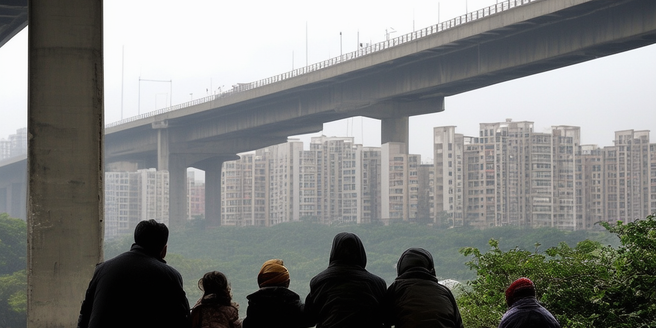Understanding the Connection Between Housing and Poverty
Research consistently indicates a significant association between a lack of affordable housing and ongoing poverty, with individuals or families often forced to allocate a substantial segment of their income towards housing costs. As a result, they frequently curtail spending on other essential needs such as nutritious food and healthcare, which are fundamental to leading a healthy life. This forms a destructive cycle, as their income is insufficient to meet their basic living requirements, entrenching them deeper into poverty. The socio-economic predicament where maintaining suitable living conditions requires an outsize proportion of income can have widespread detrimental effects. Hence, understanding the potent link between housing affordability and persistent poverty is crucial for devising strategies to fight poverty and improve economic circumstances for all.
The Current State of Affordable Housing
The global housing challenge continues as countless people grapple with locating affordable, quality housing due to rapid urbanization, escalating populations, and inadequate housing policies. Rapid and uncontrolled urbanization leads to strained infrastructure, as the flocking of people to cities outpaces the planning and provision of adequate housing. Rising populations amplify this issue, producing a significant inadequacy of homes as the current housing options can’t keep up with this surge. Furthermore, many areas, especially less economically developed ones, experience deficits in sound housing policies, with existing policies often lacking and not addressing the needs of growing populations. This results in a stark imbalance between the demand for and supply of affordable housing, as demand far exceeds provision, leading to rapidly diminishing supplies. Therefore, immediate attention and corrective policies are necessary to not only meet the increasing demand, but to ensure the access to affordable, livable, and decent housing for all.
Challenges in Accessing Affordable Housing
The scarcity of affordable apartments and houses, coupled with other significant barriers such as discriminatory housing practices and stringent eligibility criteria for housing assistance programs, make it difficult for many households to secure comfortable living. Practices that unfairly prioritize or disadvantage certain groups contribute to social inequities and curtail housing options. Additionally, eligibility criteria for assistance programs often isolate those in need, placing an unnecessary burden on low-income households. Also, most affordable housing units are located far from job opportunities and vital services, increasing commuting costs and making everyday living more challenging. Collectively, these factors significantly obstruct people’s access to affordable housing, reinforcing hardships in securing conveniently located homes for socially disadvantaged groups.
Role of Government Policies in Affordable Housing
Government policies indeed play a significant role in ensuring cost-effective housing availability, particularly for economically disadvantaged sectors. One of the main ways this is achieved is through effective zoning laws that control land and property costs. Governments can decrease land prices by reclassifying industrial areas for residential use or allowing smaller lot sizes.
Governments also incentivize private developers to contribute to the affordable housing market. This strategy not only helps the government reach their housing goals but also encourages the private sector to partake in providing affordable housing. Governmental bodies can ensure affordability, availability and accessibility of homes amongst lower-income households with direct housing assistance in the form of subsidized housing or rent vouchers.
In conclusion, government policies, through zoning laws, incentives for developers, and provision of direct aids, play an administrative and socially responsible role to increase affordable housing availability. Therefore, lower-income households are more likely to secure decent living conditions, exemplifying the government’s commitment towards improving living standards for all citizens.
Real-Life Stories: The Impact of Affordable Housing
Affordable housing plays a vital role in improving lives like Jane’s, a single mother from Detroit, who was able to escape poverty due to a government housing assistance program. This accessibility to affordable homes allows countless individuals and families to overcome adversity. Besides simply providing a shelter, affordable housing infuses hope and could mean a safer and secure environment for children to flourish. Stories like Jane’s emphasize the immense potential impact of affordable housing and the importance of upholding such programs to improve living standards and dignity of life.
Moving Forward: Innovative Solutions for Affordable Housing
Despite the ongoing challenges, there’s hope with emerging innovative solutions such as modular homes, communal living arrangements, and technology-driven construction methods. These solutions offer new opportunities in managing housing issues. For instance, modular homes provide a cost-effective, efficient approach to housing. Communal living arrangements offer economic and social benefits by reducing financial burdens associated with living alone. New technology-driven construction methods, including automated processes and 3D printing, are speeding up building processes and reducing costs. By integrating these game-changing solutions into housing policies, we can challenge poverty cycles related to poor housing conditions. This collective effort has the potential to make affordable housing a reality for many, bringing transformative change to lives and communities.



